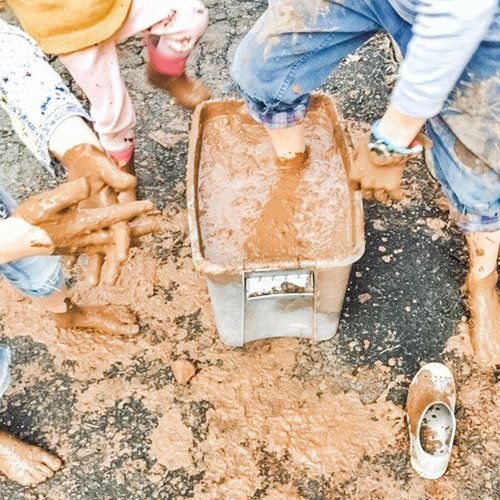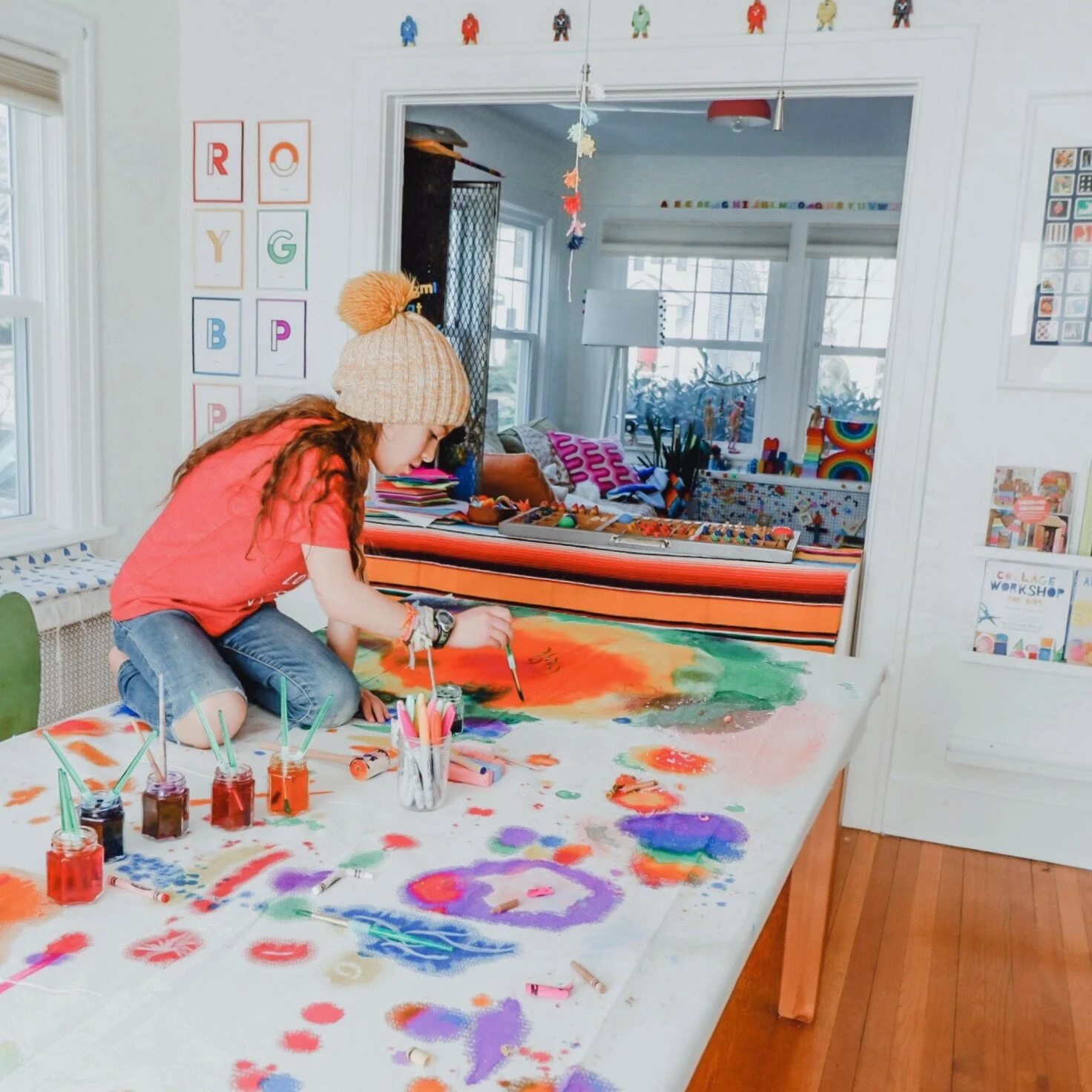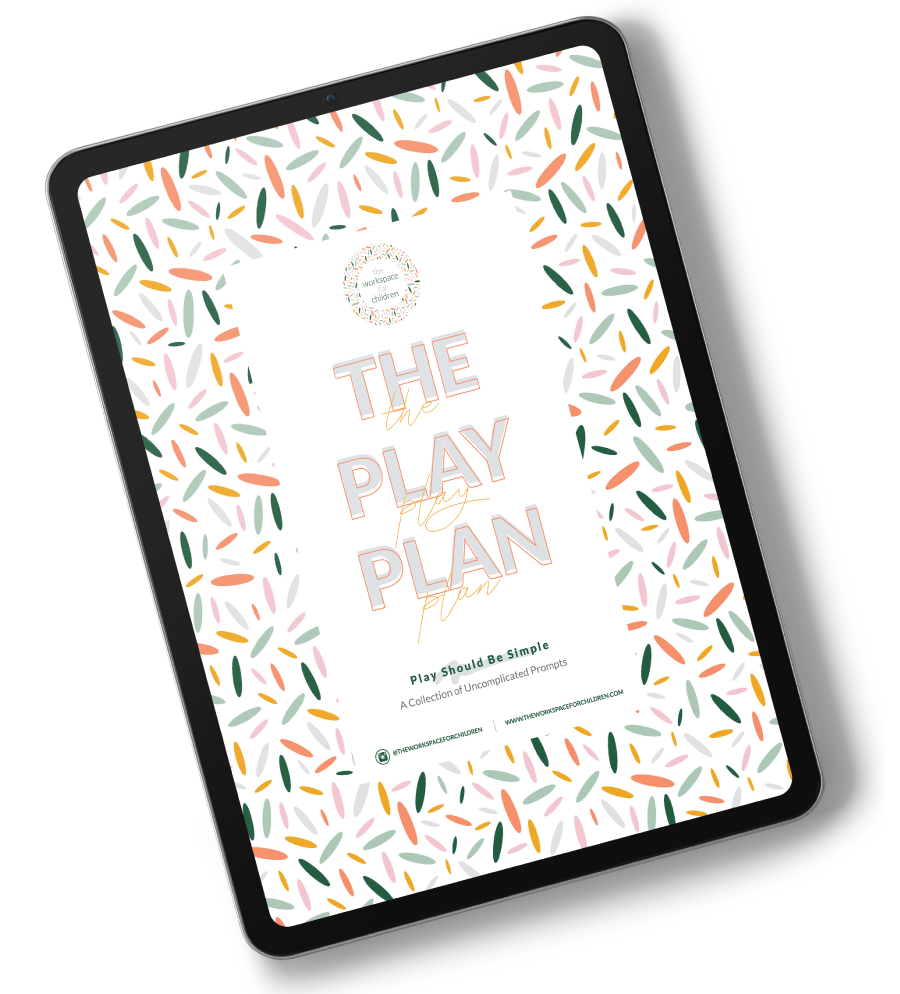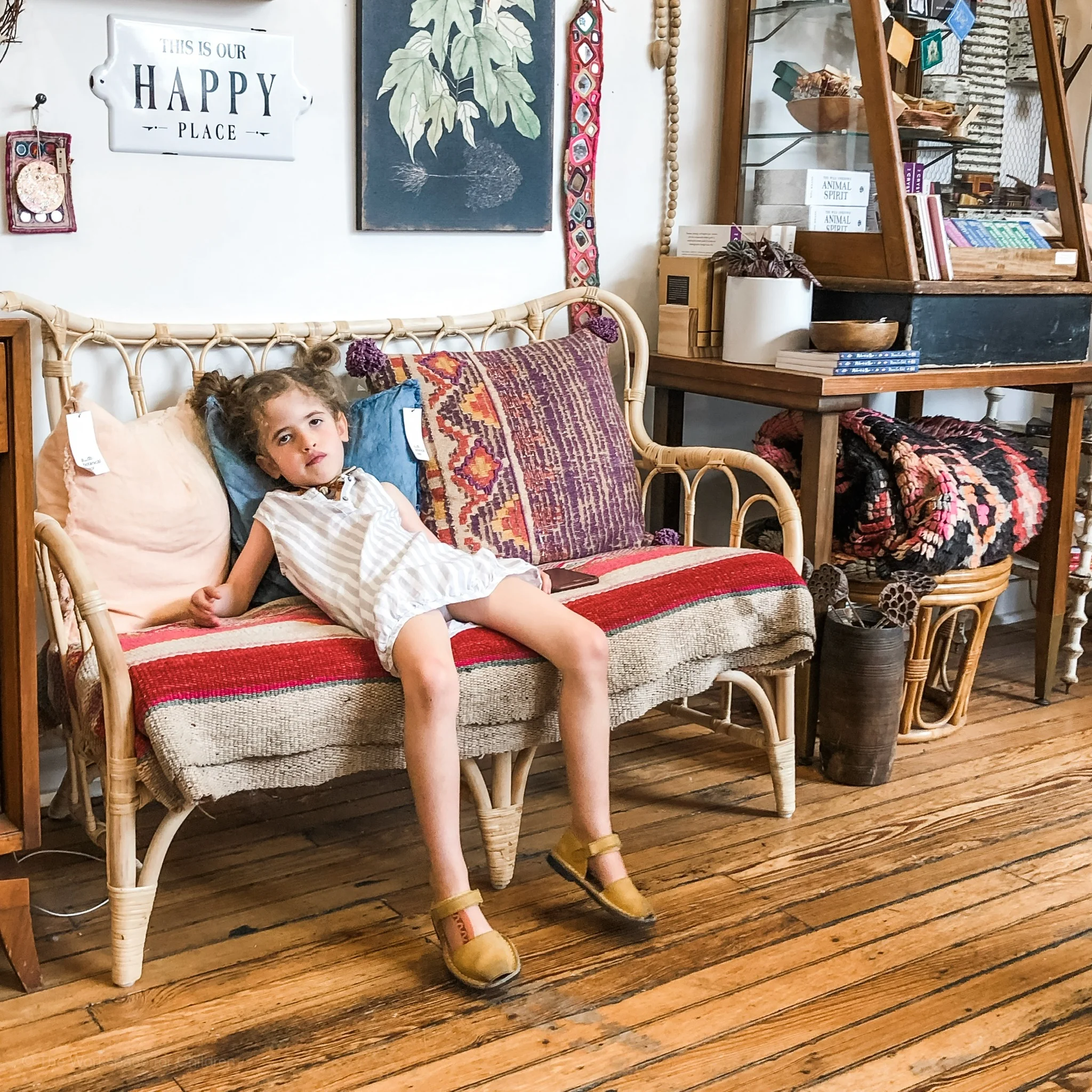MESSY PLAY
/If you love this blog, don’t forget to subscribe to The Workspace for Children Newsletter for more!
Letting the kids get messy can feel overwhelming when you don’t have a plan of attack. It can also cause friction with your partner or other family members who are not on board with the fun. They might not understand the amazing benefits that a romp through some muddy puddles provides. Did you know that getting messy is vital to healthy child development? An opportunity for sensory integration, language development, healthy risk taking, cause and effect, fine and gross motor skills, and much more. That doesn’t mean you need to cover your children and your home is mud.
Messy Play Is NOT A Free For All
Setting limits and boundaries around messy play will allow you to get comfortable with your kids getting messy. Limits will also make clean up much more manageable and just might help your get your partner on board. Start small and practice with messy play that not as, well, messy! Try whipping up this simple soap foam recipe. Skip the food coloring if you want to keep the mess “clean.” Or you can try simple water play. You can read all about the how to and what the amazing benefits are here. If you are ready to get really messy, invest in a huge drop cloth like this one. It catches the mess and provides a physical boundary for the children. It offers a visual cue for your children.
Practice Practice Practice
Practice staying on the drop cloth before you put out the messy material.
Here’s how:
“Hey, Stevie, do you want to paint your trucks and then wash them? It might get messy. This is called a drop cloth. I am going to spread it out here on the floor with your trucks and paint and water. When you are working, I am going to remind you to stay on the cloth to keep all of the mess right here! At first, it will probably feel hard to remember. Let’s practice. Pretend you just started painting but then you remembered you wanted something upstairs… Oh wait!! don’t come off the drop cloth. Instead, ask mom to get it for you.”
This takes time and practice. Start with the activities out and practice keeping the mess on the cloth. Get your child on the same team by telling them, “I really want to let you do this fun activity and I am feeling a little bit worried about the mess. Can you help me?” Keep a clean damp rag handy (or a stack of rags). Show it to your child and tell them how to use it. This will empower your child to wipe their hands or feet if necessary and keep anything out of eyes. Limit the materials. If you are putting out paint and trucks, start with one large truck or two small ones. Use one color of paint and one brush. You can always add more if you see that your child needs more. When you put out too much paint or too many items, it can lead to overwhelm. You will be amazed with how productive your child will be when you limit the materials.
IMAGE: UNSPLASH
Have a Game Plan For When The Play Is Over
Keep an empty bucket nearby to collect any dirty materials, cups, mixing spoons etc. At clean up time, your child can plop them into the bucket with warm, soapy water to be dealt with later. Have a plan of attack for the laundry. Do you have old or stained clothes you can designate for messy play? Having a set of clothes that you are not worried about frees you and your children from cringing when that first splatter lands. Keep a laundry bin next to the work area so that when the play is winding down, the children can strip off their dirty clothes on the drop cloth, eliminating a trail of mess leading to the bathroom. Stay nearby to supervise, but try to let your kids do their own thing. Children learn and play most productively when they’re adult trusts them to come up with their own ideas.
But What If…
IMAGE: UNSPLASH
What if my child won’t listen? What if my child throws the paint or chucks things off the drop cloth? First, remember that this boundary testing is normal and necessary. If your child is new to this kind of play and having rules, they need to make sure you mean it! Remind them. Be calm and firm. “Stevie, wait! Remember when we practiced staying on the drop cloth earlier? You forgot. That’s okay. You are still learning. I can remind you.” Then, if it continues to happen, calmly and firmly end the play. “Today it is too hard to keep the foam on the drop cloth. I am going to take the bowl of foam away for today, and we can try again tomorrow.” And take it! Read a book instead. But make sure you try again! And again! Limit the materials, get on the same team, talk about the rules. This takes practice. When the fun has been had and the mess cleaned up, take a few minutes to think about what worked and what didn’t. Revise your plan for next time.
Talk To Your Child About Play! Revisit It At Bedtime
“Today we played with paint on the drop cloth. You painted your trucks and babies and then washed them all clean again!” Then listen and let your child lead the conversation. Finally, try hard not to act anxious about the mess. Children read our cues. If you are confident, they will be too. Do you want to have simple, engaging play activities for your toddler this summer, but you don't have time to surf the internet, buy the materials, and and create complicated play prompts? Check out my ebook, The Play Plan by clicking below:











An icy cold activity that won’t cost a dime and will entertain a very young child equally as well as a grade-schooler.